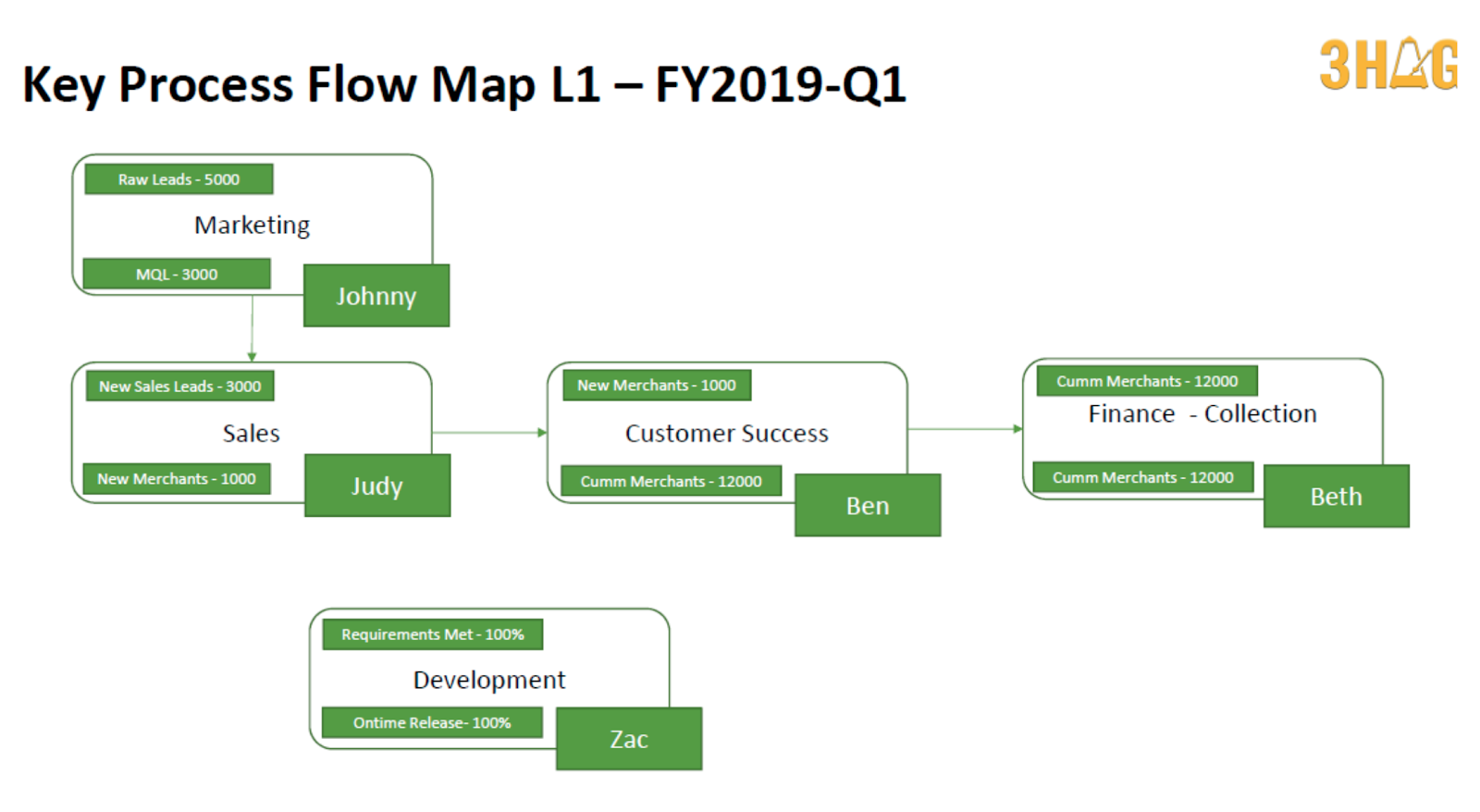Quick Summary
To achieve complete clarity over execution, businesses should define clear accountabilities, utilise diagnostic tools to identify operational gaps, and ensure each function has a designated owner responsible for its performance.
Takeaways
- Clearly define responsibilities to ensure accountability and execution clarity.
- Use diagnostic tools to identify operational gaps and improve efficiency.
- Assign ownership for each function to drive performance and accountability.
- Align teams with clear goals and expectations to enhance execution success.
Ever feel like things aren’t running well in your business? Can’t put your finger on why? Maybe there’s no easy way to feel as though you’re making continuous improvement. Something is hampering your growth. It’s like having your tyres out of balance on your car but not knowing that’s the reason for its underperformance.
When I meet clients for the first time, they tell me their issues and frustrations. But often they’re looking at the wrong things. They know they can drive faster but they’re fixated on the fuel sensor. They’ve no idea there’s a problem with the wheels. Once I feel there’s a good strategy in place, we start looking at execution. I introduce them to a couple of fantastic diagnostic tools that transform their understanding. Suddenly they have an insight into the operation of the business that they’d never had before. It works like a dream!
So what are these tools? How do you get complete clarity over execution?
Look at accountability
The first place to look is at accountability, or lack of it. There’s a great story that illustrates this. It’s about four people named Everybody, Somebody, Anybody and Nobody. ‘There was an important job to be done and Everybody was sure that Somebody would do it. Anybody could have done it, but Nobody did it. Somebody got angry about that because it was Everybody’s job. Everybody thought Anybody could do it, but Nobody realised that Everybody wouldn’t do it. It ended up that Everybody blamed Somebody when Nobody did what Anybody could have.’ Recognise this? It’s the same in every business I’ve ever worked with. Says it all.
Smaller companies have staff who wear a number of hats. I remember when we started scaling up Peer 1 in Southampton. As MD, I used to say to my team if they were doing more than six jobs, it was time to find a new person. It’s one of the fun aspects of working in a start-up – you get to be a generalist with loads of variety and opportunity to expand skills.
At some point, as a business grows, it needs to start specialising. And you end up with an org chart. What a waste of time! It tells you who reports to who but not much else. The problem here is important, cross-functional areas fall down between the cracks. People end up with responsibility for things but not accountability. It’s worth me spelling out the difference. With accountability, the buck stops with you. You own the issue, task or role entirely. If it goes wrong, you admit that the fault lies with you. Conversely, responsibility can be shared. You can work with a team of people to divide responsibility equally. Responsibilities are often given out by the accountable person.
Take HR as a good example. It’s often taken by a more junior member of staff who isn’t on the executive team. And yet there are critical elements to their role that have a massive impact on the performance of the business. Compliance? Critical. Recruitment? Incredibly important. To grow, your business needs a high percentage of A-Players and this should be owned at a senior level.
Make one person accountable for each function

As part of my two-day kick-off with new clients, we work through the Function Accountability Chart which is a ScalingUp® Growth tool. All areas of the business are listed – Marketing, Sales, HR, IT, Learning and Development, Finance, Culture, Staff Engagement – and a set of terms agreed. The aim is to ensure one name has overall accountability for each area. This is important. The buck needs to stop with this person.
Some names will appear in more than one box. This stimulates productive conversation around the things that are important to customers and staff and who’s accountable for these things. We work through the areas that cause most friction in the business and make sure they’re allocated. Some of these are easy. Others not so clear cut. There are two that always get missed. And, in my view, this is the reason why growth in so many businesses plateaus.
The first is new product development. Normally when a business starts up, it’s because an entrepreneur has a clear idea of what they want it to do. They know instinctively who their customer is and how they should go to market. Then something changes. Perhaps there’s a shift in the business model or environment (or a global pandemic hits!) Unless they have a person with product development accountability, this organisation will flounder. It’s fundamental. This is different from sales and marketing – they are about what you already sell. New product development is about looking for new lines of revenue from your core customer or even a new core customer.
The second missing area is customer advocacy. When I ask exec teams who’s accountable for this, they all put their hands up. Which frankly means nobody is. You need one person to manage all the customer touchpoints – looking end to end at the quotes to cash cycle.
Work out the most important functions
The Function Accountability Chart is useful because it starts you on the journey of working out what’s most important. Take recruitment. Do you have a world-class process that ensures you’re attracting and hiring A-Players? If so, who’s accountable for this? And what about staff engagement? Where does that live? Who makes sure that once you’ve got these A Players in place, you’re developing and retaining them well enough? Who owns culture? Maybe you, as CEO, know this sits with you but it’s never been made explicit.
In last week’s blog, I talked about the most important metrics every business should be measuring right now and this is how you identify them. Remember, your company will never be better than its leadership team. Every member of this team needs to realise that, first and foremost, they are a business leader. So the Sales Director may have to pick up accountability for recruitment as they’re the one who’s most involved in this. Someone needs to make sure it gets done properly. To scale your business effectively, these gaps need to be filled. And they can only be filled by the people in the room.
Plan ahead

Not only do we work through the Function Accountability Chart for the company today, but we also produce a future chart as a destination after three years. This is always interesting. Say the Head of Company is also currently the Head of Sales. In three years’ time, they probably won’t be. So, as a team, we decide at what point in terms of revenue would they relinquish that responsibility? Which quarter would that happen in? This is great because people who might see themselves in that role can see the timetable. If they want to put themselves forward, they can do that now and the team can help them succeed. Or a recruitment plan goes into action.
It’s often a new way of thinking for my clients – this process has never existed in their business up until now. Before, they were reactively filling roles as they cropped up. One client planned to grow from 300 to 750 staff over the following three years. As part of our discussion, they identified they needed forty managers. They wanted to promote from within, so I asked them whether they had a management training programme. They didn’t. It wasn’t until they looked at the numbers that they realised they needed one. There was nobody in their executive team with that learning and development accountability so we sorted this immediately.
With the same client, we discussed where these new recruits were going to work. Again, there was no plan for finding office space. If you want to do this economically, you need to be thinking 12 months or more ahead. Again, who was accountable for making this happen? It’s so important to think about where you are now, what the future holds and which functions are going to be most important over the next few years.
Work out the processes that make your company money

The next stage of getting clarity is to take the functions, with their accountable person, and map them in a Key Process Flow Map. As soon as you start doing this, you can see which are critical to making money. Part of Shannon Susko’s ‘3HAG’ methodology, this fab tool allows you to rate each of the elements red, amber and green, showing where you’re at with each of the processes
So now you can educate your staff around why certain processes are more important because they generate revenue. You can also clearly see where your immediate focus should be. And so begins planning for the next 90 days with full knowledge of who’s accountable. This may be the first time the Exec team says in public that certain areas of the business are floundering or need attention. But because accountability has now been pushed up to someone more senior, a plan can form around each critical function.
Identify metrics
The next step is to identify criteria to keep progress on track and measure success. On the right of the Functional Accountability Chart, there are two columns for leading and lagging indicators. As a team, you need to decide what these are for each of the functional and cross-functional roles and areas.
Most companies will have lagging indicators – for a Head of Sales, it might be revenue or sales order intake. But they’re less clear about their leading indicator. You need to be thinking, in the next quarter, what number do you track so that you know that the lagging indicator will be on target? So for sales, you might know that it takes 400 customer demos per quarter to hit your sales target. So, if your lagging indicator is sales order intake, your leading indicator might be the number of demos sat in the quarter.
Once these indicators have been identified for each function, they can be tracked in every management meeting. If the process is green, then everything’s on track and you can skip past it. Carrying on with sales as an example. If it’s green, there’s confidence about next month’s revenue. So sales don’t need to report. You move on to something that’s amber or red. This prevents people from droning on about what they’ve done. Instead, you focus on problem areas. And you can fix the next period before it’s finished. Brilliant!
Getting clarity on who’s accountable, what’s important and how you measure your progress are fundamental to execution. Once you have these things in place, you’ll know with complete certainty where you need to focus. And the speed of your growth will accelerate as a direct result.
Written by business coach and leadership coaching expert Dominic Monkhouse. Contact him to schedule a call here. You can order your free copy of his book, Mind Your F**king Business here.

